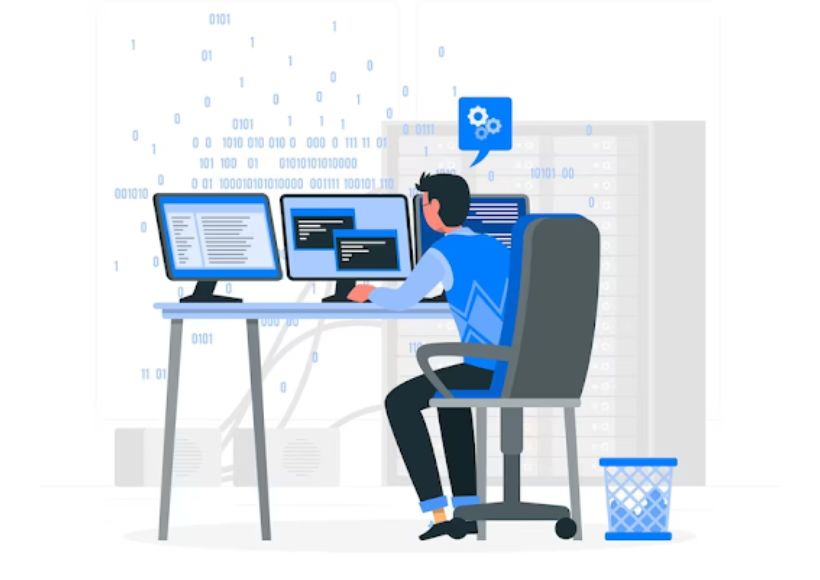Simplify App Extensions Using Low-Code Development Solutions

While delivering customized solutions that address individual business requirements can be a unique competitive advantage, such customization is often accompanied by increased complexity, time consumption, and resource consumption.
For deep customization that doesn’t require heavy coding, businesses are getting to be agile, and it can give you that transformation using a low-code application development solution. This blog will explore how low-code development solutions simplify the trade-offs between customizing applications to fit business objectives and maintaining order in application complexity.
Table of Contents
What is a Low-Code Development Solution
Low-code application development solutions mitigate the requirements for developing software apps. They accelerate the development and publishing process for application designers, prototypes, and implementers by offering visual interfaces and pre-built components to technical and nontechnical developers, eliminating the need for extensive hand-coding work.
Customization Redefined
In the old software development paradigm, applications were built from scratch, with complex coding needed even for minor adjustments. Such deep coding led to long cycles, inflexibility, and difficulty meeting changing business needs. Low-code development solutions break this cycle by creating a blank slate for you to personalize without coding.
Advantages of Tailored Low-Code Solutions
Developers can configure application elements directly using a visual interface or provide rapid user feedback, so they do not need to wait for a redesign and slow down the development process in response to changes in the market and changing business demands. They adapt faster and react faster to change than other technologies can, driving agility and innovation with the continued support of new opportunities.
Highly Customized
Low-code solutions can be tailored according to your business’s needs. Low code enables product integrations, be it changing the workflows, adding a custom layer or some custom branding that characterizes you, or changing branding styles overall. With low code, you build applications that build you as an organization.
Rapid Prototyping and Iteration
Customization is often an iterative process before arriving at the ideal result, making low-code’s rapid prototyping capabilities indispensable to quickly building prototypes, testing with users, gathering feedback, and iterating until you get to what works and then iterating on top of that.
User-Centric Design
The user should also have some settings so that customization is not just on the feature end but also on the user end. Low code allows you to set up user interfaces that correspond with users’ expectations and increase an application’s interactivity.
Less Time to Develop
Low-code can significantly speed the development time of custom applications, which directly translates to rapid time to market, and therefore, an opportunity to take advantage of the opportunity at the right time because it can be built and ready at the right time by using the components already built and reducing a lot of time in building with less or no-code.
Real-Life Customization Scenarios
Take a retail business that wants to customize a mobile to communicate several promotions to different groups of users. It can also build rules-based logic with low-code development tools to ensure that only the most relevant offers are shown to each unique user.
Healthcare Sector
A hospital might need a custom patient management system that aligns with its workflows and processes. Low-code solutions allow hospitals to fulfill these unique requirements easily and at low coding costs.
Financial Institutions
The custom data analysis and reporting dashboards built in Low-code are heavily relied upon by unlike financial institutions, who can design them according to their exact specifications so much that they become a prized strategic decision-making asset.
Low-Code Paved The Way To Stay Afloat In Complexity
Although low coding development solutions provide a less complicated way to customize web pages, all merits come with demerits, so demerits should be taken into consideration —
Customization vs Out of the Box Features
Achieving the right balance between built-for-you capabilities and out-of-the-box functionality is essential. Customization can offer helpful additional functionality, but too much reliance on customization might cause overcomplication and create a possible Technical Debt.
Enhancing Scalability
Scalability should never be compromised due to customizations; ensure your low-code solution supports it when your application changes and scales up.
Compliance and Security
All customized solutions adhere to industry regulations and security standards, and low-code solutions are designed to ensure security compliance without hindering customization.
Developer Roles
Building apps with low-code: New roles for developers as orchestrators & creators While developers can use prebuilt components to assemble applications quickly, they are becoming orchestrators and creators who think about how to design complex workflows, integrations, and custom logic but also need to think about making sure that customizations are aligned with business goals, that they meet performance standards, and that they follow best practices.
Pick Low-Code Solutions Wisely
Here are the essential criteria that define an effective low-code development solution:
User-Friendly: Make sure the visual interface fits within the skill levels of your team.
Customizability: Select platforms that enable the customizability of appearances and logic designs.
Integration Ready—Your solution must integrate with existing systems to create a harmonized technology environment.
Conclusion
Low-code development solutions bring the ideal of customizable yet complexity-free application use to life, ensuring enterprises with powerful tools to customize applications according to their unique needs and achieve their business-plan objectives faster, more innovatively, and in alignment. Low code is a powerful enabler that goes beyond software customization — it allows organizations to build solutions that authentically reflect an organization’s mission while becoming an indispensable part of its success.
